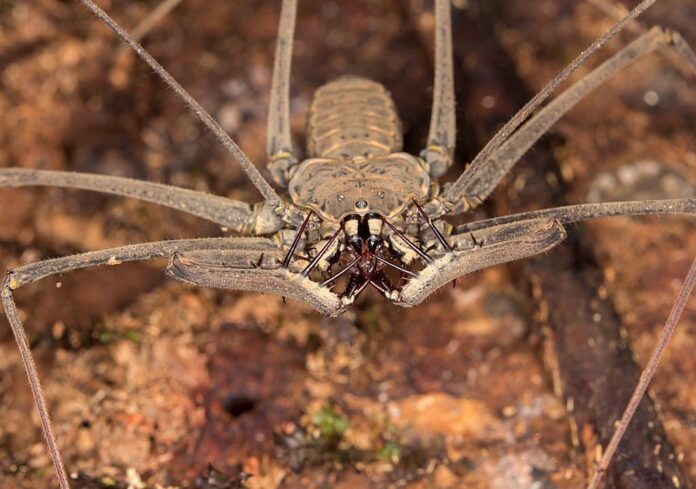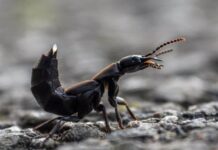Whip spider looks like they are every arachnophobic’s worst nightmare, and they somehow look too scary to be true. Despite the name and appearance, these little creepy crawlies are not true spiders and they are more related to whip scorpions. For those who want to know more about whip spiders, you will find some of the details below interesting.
1Appearance
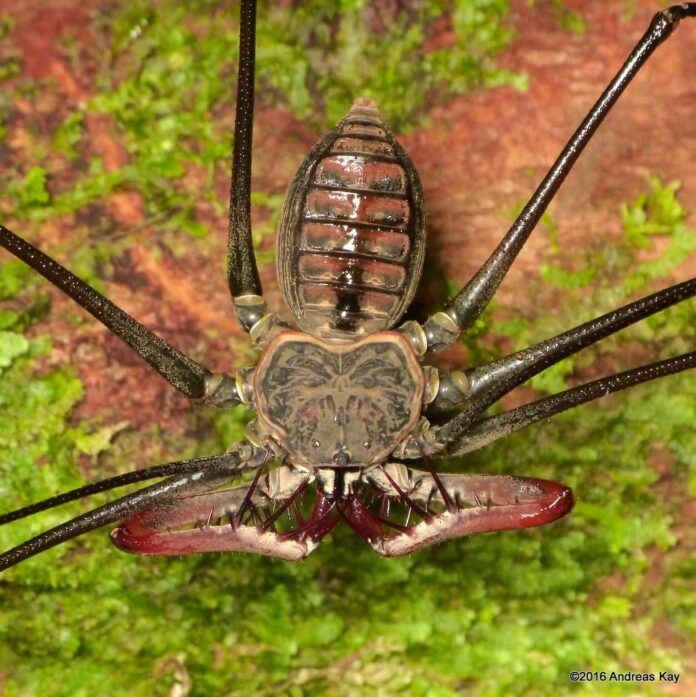
As you can see, a whip spider has a broad and highly flattened body that is black, brown, or gray in color. The flat body is between 2 and 8 centimeters which them to hide under almost any stone or in tiny crevices. It has 10 legs, and the leg span is anywhere from 5 to 16 centimeters, making it look quite intimidating. The first pair of legs is very long, thin, and whip-like; hence the name. These thin legs also have joints that allow them to move deftly through their environment easily.
Also, this first pair of legs is not for walking; their job is to act as sensory organs. These legs have numerous sensory receptors, and the spiders can extend those legs several times their body length. Along with that, their legs are usually covered with spines that help them cling to rocks and other structures. It has 8 eyes, a pair of median eyes at the front of the carapace, and 2 smaller clusters of 3 eyes at the back. However, these eyes do not provide enough vision so they rely on something else to catch prey.
That is not all, there is another notable feature which is the flagella which is the long and thin antennae that protrude from their heads. These flagella can be up to 3 times as long as its body, and they are useful in helping the spiders explore their surroundings. A whip spider’s flagella are also covered with hairs that are sensitive to touch and movement.
2Behavior
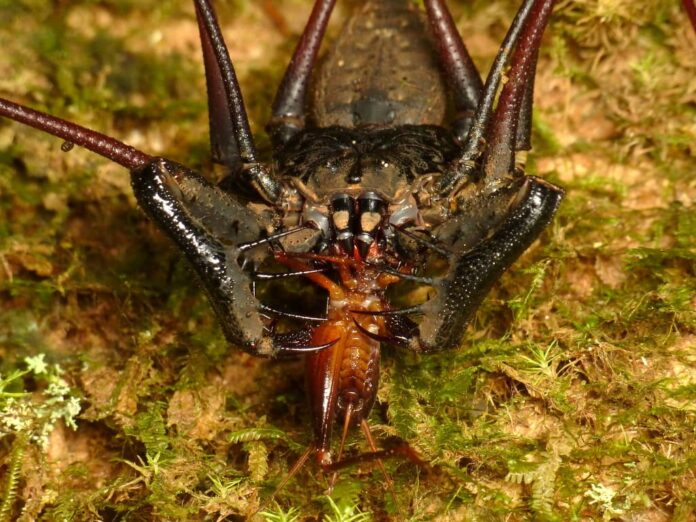
Whip spiders spend most of the day resting in their hiding places to protect themselves from predators. A whip spider has large and spiny pedipalps that they use for catching and retaining prey. As they move, they hold their flagella ahead to scan their surroundings and detect potential prey. These pedipalps are covered in large spines that allow them to grasp, impale, and immobilize the prey. Then their pincer-like chelicerae grind and chew the prey before they ingest the meal. Because they do not possess silk glands or venom, they do not spin webs or bite like true spiders. Should they feel threatened when being handled by humans, they can grab fingers with their pedipalps. This little grab does not hurt much though it can cause thorn-like puncture injuries. Whip spiders cannot bite or inject venom so they are harmless, and they tend to run away in dangerous situations.
3Feeding & Habitats
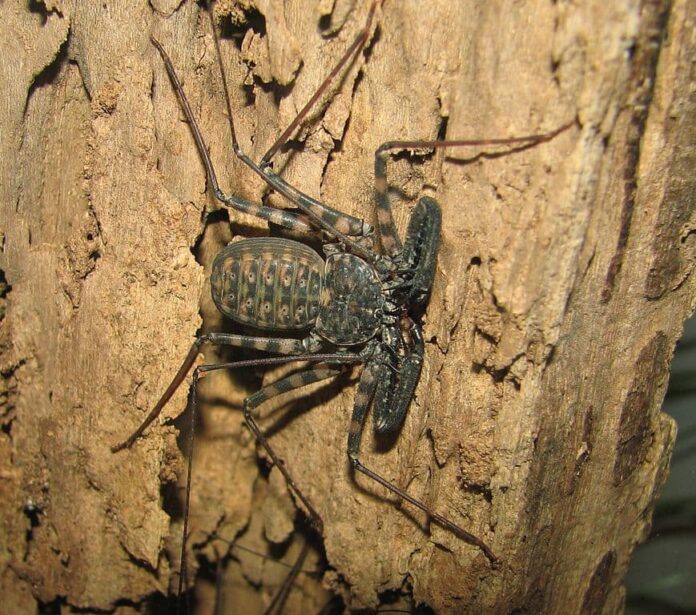
As nocturnal hunters, whip spiders only emerge at night to look for prey. Their most favorite meals are arthropods but they also feed on vertebrates if the opportunity arises. Some of the common animals that they eat are crustaceans, frogs, large insects, and other small animals like grasshoppers and spiders. Usually, they tend to eat prey around the size of their head thorax region. Another interesting thing is that they do not feed for a period of time before, during, and after molting. Therefore, they can go for over a month without food which is pretty impressive.
Whip spiders have a wide distribution throughout most subtropical and tropical regions, living in a variety of habitats. They inhabit deserts, humid areas, and rainforests where they live in caves, crevices, and under large boulders. Just like other whip spider species out there, this one also likes damp environments. So it is also common to see them near bodies of water such as lakes, rivers, and wetlands. On top of that, they are also able to climb trees and plants and cling to their branches to find food and hide. Coming across one is also not common because of their hunting habits and habitats so arachnophobics have nothing to worry about.
Related Post: Ogre-Faced Spider Facts

